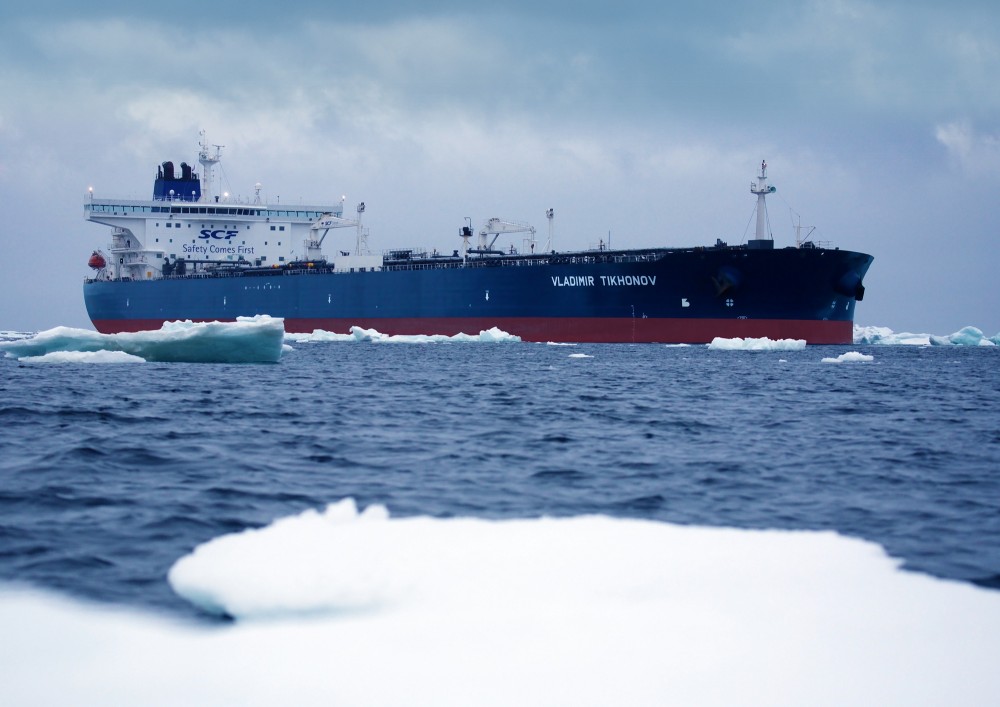Oil shipments through Barents Sea could skyrocket with Rosneft’s new Arctic field
Though Asia holds most of the projects long term markets, early shipments would west toward Murmansk.

Rosneft’s Vostok oil project will be one of Russia’s biggest ever oil projects and when its development could see an uptick in tankers sailing through the Barents Sea.
On the vast stretches of the far northern Taymyr region, Rosneft intends to produce an annual 115 million tons of oil by year 2033. Already by 2024, production is to reach 30 million tons. Then, 50 million tons by 2027.
According to company leader Igor Sechin, Vostok is one of the most prospective oil production projects in the world with 52 license areas and a resource base of more than 6 billion tons. The project includes the building of several hundred kilometers of pipelines across the desolate tundra to a new terminal on the Kara Sea coast.
Asian countries are the prime market for the Vostok Oil. However, Rosneft will not be able to build the carriers needed for shipments along the eastern parts of the Northern Sea Route by 2024.
A lion’s share of the oil is consequently likely to be sent westwards towards Murmansk and western markets for several years.
Russia is in the process of building a number of new super-powerful icebreakers of the LK-60 class, as well as the Lider-class. However, the first ship of the latter class will be ready for sailing no earlier than in 2027.
Similarly, Rosneft is dependent on a major fleet of ice-class tankers that can ship the oil from the icy waters of the Yenisey Bay and through the Northern Sea Route.
According to Kommersant, the company is now placing a $1.7 billion order for ship building equipment at the South Korean Hyundai Heavy Industries. The components are likely to be used by the Zvezda Yard for the construction of ten tankers for the Vostok Oil, the newspaper reports.
A contract between Rosneft and the Zvezda Yard is expected to be signed shortly. The ships will have ice class Arc7 and a deadweight of 120,000 tons.
The ten tankers will be the first in a fleet that ultimately could count as many as 30 vessels. As Vostok Oil starts production, the ships will shuttle across the Northern Sea Route to the project terminal in the Yenisey Bay.
However, until those vessels are built, Rosneft will have to take use of existing tankers, which most probably means that it through most of the year will have to choose the less icy path to Murmansk instead of the more difficult eastern route through the Laptev Sea and East Siberian Sea.
In Murmansk, the company might have to build two new oil reloading points, energy analyst Mikhail Grigoriev told Kommersant. After reloading in the Kola Bay, the oil will be shipped along the coast of Norway to buyers on the world market.
The Vostok Oil shipments will consequently lead to a boost in oil transports through the Barents Sea and along Norwegian shores. Oil shipments have for several years significantly increased on the route following the opening of new fields by Lukoil and Gazprom Neft.
More than 20 million tons of oil are today annually delivered from Gazprom Neft’s Novy Port and Prirazlomnoye and Lukoil’s Varandey. The oil is shipped to the Kola Bay where two ship-to-ship reloading terminals handle the oil before it its exported.
That figure could quickly double.